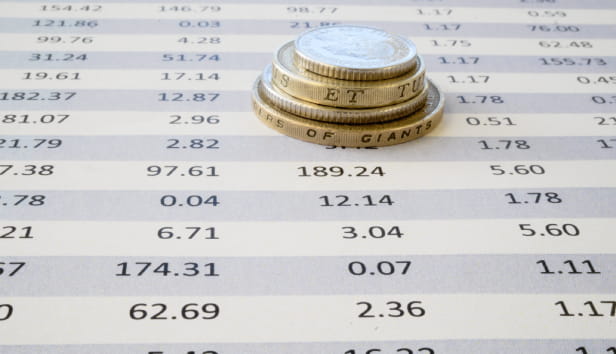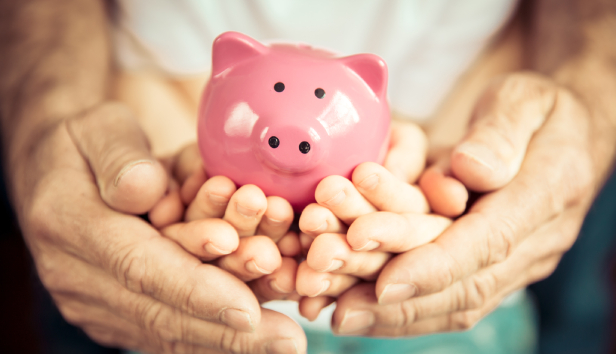
This article is for general guidance only and is not financial or professional advice. Any links are for your own information, and do not constitute any form of recommendation by Saga. You should not solely rely on this information to make any decisions, and always obtain independent, professional advice for your own particular situation. All information in this article is correct at the time of publishing, but laws, entitlements, tax treatments and allowances may change in the future.
With the end of the tax year fast approaching on 5 April 2025, now is the time to act if you don’t want to waste the allowances that could really improve your financial security.
Ensuring your savings and investments are as tax-efficient as possible might not sound like a particularly fun way to spend an afternoon. But over time it can substantially reduce your tax bills, and you can still make a significant change this year.
Each tax year brings with it a new set of annual allowances, depending on your own circumstances. If you don’t take full advantage of the current year’s tax breaks, you’ll lose the opportunity to keep more of your hard-earned money out of HMRC’s reach. So take action now.
What's on this page:
ISAs are the foundation of smart saving. The main draw of these products is that all returns are tax-free. This means you won’t have to pay any income tax or capital gains tax (CGT) as your money grows or when you make withdrawals.
There are multiple ISA options available including cash ISAs, stocks and shares ISAs, lifetime ISAs and innovative finance ISAs. If you want to save on behalf of a child or grandchild, junior ISAs are available too.
Each year, you can put up to £20,000 into an ISA (£9,000 for a junior ISA). But it's a case of using it or losing it, as you can't carry any unused allowance over into the new tax year. And with the current uncertainty about the future of cash ISAs, this could be a good time to make sure you use your allowance, if that’s how you want to save.
Nick Onslow, chartered financial adviser at wealth management firm Progeny, says many clients use ISA savings to boost their retirement income, as the returns or interest you build up will add to your pension free of tax.
“ISAs are great, particularly when used alongside other tax-free allowances to reduce your ongoing tax burden in retirement. ISAs are also transferable between spouses on first death, so you can inherit their allowance,” he adds. Remember, if you’re investing through a stock and shares ISA, the value can always go up and down, so you can’t guarantee a return.
If you sell an asset or investment that has increased in value since you bought it, you might need to pay Capital Gains Tax (CGT). This could apply to anything from an investment property to antique furniture, company shares and investment funds.
Everyone has an annual CGT allowance, which means you can make a certain amount of profit before paying CGT. From this current tax year (ending 5 April 2025) onwards, your allowance is £3,000, which means you won't pay tax on the first £3,000 of profit. If you exceed your allowance and have to pay CGT, the rate (since October 2024) is 18% for basic-rate taxpayers and 24% for higher or additional rate taxpayers.
To reduce a CGT bill, you could sell investments – such as shares – either side of a tax year change to make the most of the allowance in both years, or pass some to your spouse or civil partner to take advantage of their allowance.
If you invest in shares or funds, or you're a company director, you may receive income from dividends. There’s a dividend allowance each year – before taxes are due. In the current tax year, the allowance is £500.
If you exceed your dividend allowance and have to pay tax, the rate is 8.75% for basic-rate taxpayers, 33.75% for higher-rate taxpayers and 39.35% for additional-rate taxpayers. However, it’s possible to reduce this tax liability by using a process called ‘Bed and ISA’.
This makes the most of the fact that any dividend income within an ISA is tax-free. “Your route to a lower tax bill is to move your money into ISAs, and to consider any unused allowance from a spouse,” says Laura Suter, Director of Personal Finance at investment platform AJ Bell.
“Prioritise shifting your biggest dividend-paying investments into your ISA first.” The process involves selling taxable investments, then instantly rebuying them within your ISA (remember, that’s currently up to the value of £20,000 per tax year).
However, to do this you’ll need both accounts to be on the same investment platform. It’s highly recommended you speak to a professional financial adviser to help you navigate this potential move, especially if you’re new to the process.
Most people can pay up to £60,000 into a pension each tax year – or 100% of your earnings if you earn less than that. This gives you tax relief on whatever you pay in, with the amount equivalent to the rate of income tax that you pay.
Basic-rate taxpayers receive 20% relief, which means it only costs £800 to save £1,000. Higher-rate taxpayers only need to pay £600, and additional-rate taxpayers £550, to invest the same amount. Sometimes only basic-rate tax relief will be paid automatically, and higher-rate taxpayers may need to claim back the additional 20% or 25% they're entitled to through a tax return.
This’ll be the case if you’re paying into something like a self-invested personal pension (SIPP). If you're still paying into a work pension, you might get the correct amount of tax relief applied automatically.
If you aren’t sure how tax relief is applied to your workplace scheme, just ask your employer. Even if you've retired, you can still pay into a pension. You’ll get tax relief if you’re under 75, and money held in a pension is not included in your estate for inheritance tax purposes.
If you’re still working, most people can pay in as much as they earn (up to £60,000). But, if you've already made taxable withdrawals from your pension, you’ll have a lower pension allowance of just £10,000. This is called the Money Purchase Annual Allowance (MPAA).
We explain more about how the MPAA works here. If you don’t work or pay tax, you can still pay up to £2,880 a year into a pension. This is topped up to £3,600 by basic rate tax relief.
The good news is that unlike many allowances, you may be able to carry forward any unused pension allowance from the previous three tax years – using the so-called carry forward rules - apart from any unused MPAA. Therefore, if you’ve already maxed out your pension allowance in the last 12 months, look back over previous years to see if you can pay in more.
.jpg?sc=max&mw=800&h=450&la=en&h=731&w=1300&hash=36E0CD7806BBB73366B4BFCFD5BEEB38)
If you're married or in a civil partnership and one of you doesn’t pay tax (with an income below the £12,570 personal allowance) while the other pays basic rate tax, you can claim the marriage allowance.
This allows the lowest earner to transfer £1,260 of their personal allowance to their spouse, saving them up to £252 a year – although the rules are slightly different in Scotland.
Better still, you can backdate a claim for any tax year since 5 April 2020.
You can give away money or gifts totalling £3,000 each tax year without worrying about potential inheritance tax (IHT) implications further down the line. You can gift this value to one person or split it between several people.
Any unused allowance can be carried forward to the next tax year, but you can’t carry forward any IHT annual exemption beyond a year. So, if you think you have unused allowance from the 2023/24 tax year, act quickly before 5 April. Each year you can also give away smaller gifts worth up to £250 per person, if they haven’t benefited from your main gifting allowance.
You could save thousands of pounds by taking advantage of the various allowances each tax year.
Here’s a to-do list that might be useful before the end of the tax year:

Get the latest news on potential ISA changes expected in the autumn 2025 Budget.
.jpg?la=en&h=354&w=616&hash=1254A3F816E81965A47EA68E3AEC9F7A)

Our guide explains how ISAs provide tax-free growth for your savings and investments.



Don’t let a generous gift turn into a tax trap for your family – here’s what you need to know.

From their first savings account to their first home, find out how your gifts can make the biggest impact for your grandchildren



We're here to help you make the most with your money. With a rage of financial services designed with over 50s in mind.